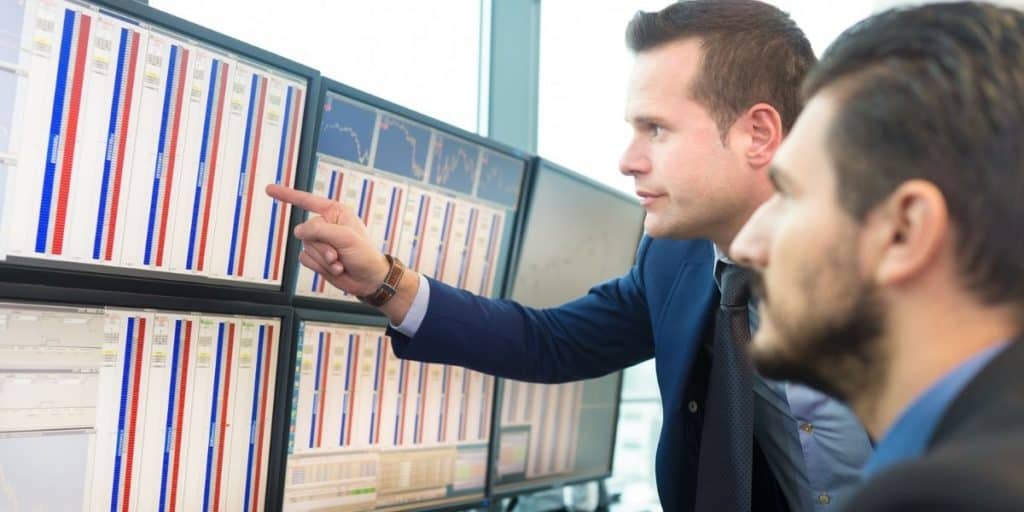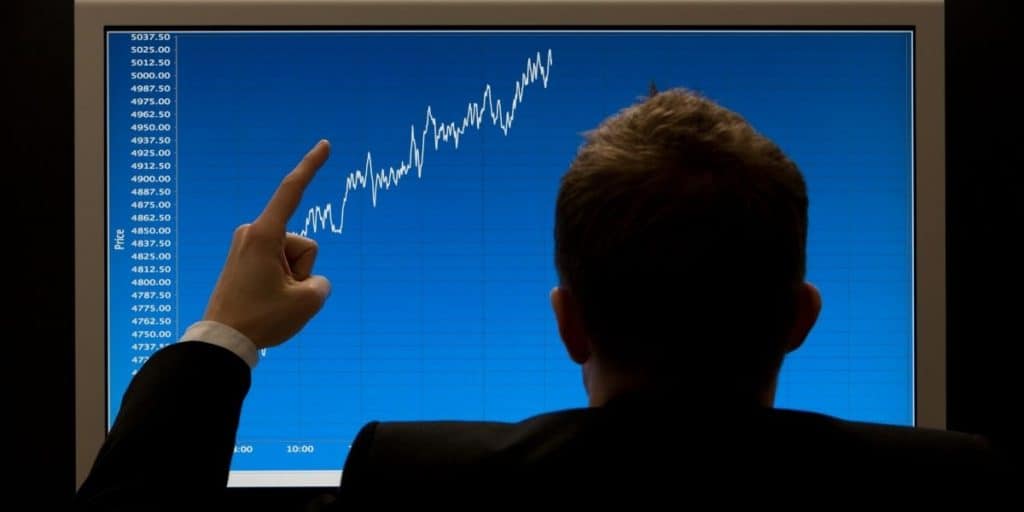As a new trader, it’s easy to descend into worry mode after a string of losing trades. At this point, many begin to tweak their trading systems, trying to prevent similar losses in the future. Is this the right approach? Is losing money solely a problem for newbies, or do professionals also deal with it?
Professional traders lose money. However, the losses are typically offset by gains over the long term. The best traders treat losing trades as another entry in a series of trading events. They allow the random distribution of winning and losing trades to play out instead of fixating on a few losses.
In this article, I’ll cover everything you need to know about professional traders, how they respond to losing and making money, and what you can learn from them as a newbie trader.
IMPORTANT SIDENOTE: I surveyed 1500+ traders to understand how social trading impacted their trading outcomes. The results shocked my belief system! Read my latest article: ‘Exploring Social Trading: Community, Profit, and Collaboration’ for my in-depth findings through the data collected from this survey!
Table of Contents
Who Is a Professional Trader?
In trading conversations, the term “professional trader” often refers to any trader that works with big banks and hedge funds. However, the term also encompasses anyone that trades for a living, managing huge volume either for themselves or for a company.

Professional traders often undergo formal training and acquire multiple certifications.
However, many trading blogs have expanded the definition of professional traders these days to include retail traders that manage 6-7 digit trading accounts and can consistently generate above-average returns.
Most of these traders are self-taught individuals who have never been inside a bank’s trading desk. They’ve never worked for hedge funds either.
Do Professional Traders Lose Money?
In pure dollar terms, professional traders lose more money than most retail traders can only dream of. In the 2008 financial crisis, the average hedge fund lost 18% of its value. That’s billions of dollars gone up in smoke in one year by professional traders.
Nick Leeson was a professional trader until he caused the collapse of Barings merchant Bank in the UK by getting overexposed on the Nikkei 225. He lost $2.2 billion. Long-Term Capital Management (LTCM) had professional traders, but they lost $4.6 billion in 1998 and needed a bailout from the government.
These are just some extreme examples of professional traders losing money. Many more hedge funds, banks, and private professional traders have losing days, months, and even years without going belly up. Many remain in business to date and will continue to attract investors because the focus is on the longer term.
How Do Professional Traders Deal With Losing Money?
When a professional trader has a losing trade, they don’t fixate on it indefinitely. Here’s what they do:
Move On to the Next Trade
A professional trader enters and exits the markets with a clear plan. They understand that losing money on one trade or a batch of trades doesn’t mean the trading plan no longer works. Instead, they understand that it’s normal for winning and losing transactions to be randomly distributed across a series of trades.
The benefit of having a trading strategy with a real edge is that over a sequence of trades, you’re more likely to come out in profits.
Professional traders keep this in mind and don’t get bogged down after a few losses. They take the next trades in line with their strategy until they are out of the drawdown and back in profits.
Stop Trading for a While
Sometimes, outsized drawdowns can happen. These are losses that are significantly higher than the numbers recorded in historically backtests. When such losses happen, professional traders will pause trading for a while.
In most cases, this will give them enough time to scrutinize the trading decisions that led to the losses. Was there a deviation from the trading plan? Was there a technical glitch? Can such losses be avoided? If no external factors lead to the loss, they move to the next step.
Go Back to Their Trading Plan
Reviewing the trading plan can show loopholes that may have been missed before. Plugging such holes earlier might have helped to prevent the large drawdown. However, before adjusting the trading plan in any way, a professional trader will run a new set of backtests to ensure the new changes won’t lead to overall worse outcomes for their trading results.
Resume Trading
After reviewing the trading plan and making changes where necessary, the professional trader will get back to the market, armed with the new modifications to their trading plan, if any. If no modifications were necessary, they’ll continue to trade as before until they are out of the drawdown.
Why Do Professional Traders Stay Calm After Losing Money?
There are two reasons why professional traders don’t panic after some losing trades:
A Trading Plan With Positive Risk-Reward Ratio
If you have a trading plan where the risk to reward ratio is at least 1:2, you’ll make twice the money lost on a losing trade with every profitable trade. A professional trader with such a strategy won’t need to panic after one loss because they know there is a high probability of ending the trading period in profits or break even at the least.
On the other hand, losing traders often apply poor risk to reward ratios. Many of them take trades where the possible profit is much smaller than the potential loss if the trade doesn’t pan out.
Adopting such a negative risk to reward ratio often translates to a situation where it only takes one loss to wipe out the profits made on multiple trades. This severely reduces the chances of long-term success for any trader.
Excellent Risk Management
Professional traders do not panic after losing money because, in many cases, the loss doesn’t leave a dent in the account. Think about a situation where a trader adheres strictly to risking 1% of the trading balance on every open trade. If 10-12 of the trades taken end up as losing trades, the account balance will only drop by 10-12%.
Compare this to a trader risking up to 10% of their balance on a single trade. The account will be really close to getting margin-called after such a losing streak.
Some professional traders only risk around 0.1-0.5% of the trading balance on a specific trade. Think about how this further lowers their overall exposure and ensures they never have to worry about significant account damage from potential losses. It will help you understand why losses never affect them.
Why Do Professional Traders Crash Accounts?
You may be wondering why the professional traders in the examples I gave earlier ended up putting their companies out of business or in huge debts with their trading decisions. Are they really professional if they can make such poor decisions?
Unfortunately, they still qualify as professionals going by the book definition discussed at the start of this article.
However, professional traders are still humans. Even when they use trading bots, they still largely control the system’s actions and inactions.

From time to time, a few professional traders will give in to their base human traits and ditch everything they know in favor of poor trading approaches. They often try to capitalize on perceived opportunities and milk them as hard as possible.
Unfortunately, every trading decision can go either way. If it works out, the trader is a genius. If it doesn’t, well, perhaps the business owners will need to go cap in hand to the Federal Reserve or sell up.
So, professional traders typically lose heavily when they deviate from sound trading principles. For example, Nick Leeson knew the risks of adding to losing positions and why it’s very wrong, but that didn’t stop him from hoping to be right on the Nikkei 225.
Author’s Recommendations: Top Trading and Investment Resources To Consider
Before concluding this article, I wanted to share few trading and investment resources that I have vetted, with the help of 50+ consistently profitable traders, for you. I am confident that you will greatly benefit in your trading journey by considering one or more of these resources.
- Roadmap to Becoming a Consistently Profitable Trader: I surveyed 5000+ traders (and interviewed 50+ profitable traders) to create the best possible step by step trading guide for you. Read my article: ‘7 Proven Steps To Profitable Trading’ to learn about my findings from surveying 5000+ traders, and to learn how these learnings can be leveraged to your advantage.
- Best Broker For Trading Success: I reviewed 15+ brokers and discussed my findings with 50+ consistently profitable traders. Post all that assessment, the best all round broker that our collective minds picked was M1 Finance. If you are looking to open a brokerage account, choose M1 Finance. You just cannot go wrong with it! Click Here To Sign Up for M1 Finance Today!
- Best Trading Courses You Can Take For Free (or at extremely low cost): I reviewed 30+ trading courses to recommend you the best resource, and found Trading Strategies in Emerging Markets Specialization on Coursera to beat every other course on the market. Plus, if you complete this course within 7 days, it will cost you nothing and will be absolutely free! Click Here To Sign Up Today! (If you don’t find this course valuable, you can cancel anytime within the 7 days trial period and pay nothing.)
- Best Passive Investment Platform For Exponential (Potentially) Returns: By enabling passive investments into a Bitcoin ETF, Acorns gives you the best opportunity to make exponential returns on your passive investments. Plus, Acorns is currently offering a $15 bonus for simply singing up to their platform – so that is one opportunity you don’t want to miss! (assuming you are interested in this platform). Click Here To Get $15 Bonus By Signing Up For Acorns Today! (It will take you less than 5 mins to sign up, and it is totally worth it.)
Conclusion
Professional traders lose money. The only difference between them and retail traders is that the best ones still come out in profits over the long term. Losing money on a few trades won’t have any strong bearing on the overall direction of their equity curve.
Retail traders who can emulate this approach to trading stand a higher chance of success overall.
BEFORE YOU GO: Don’t forget to check out my latest article – ‘Exploring Social Trading: Community, Profit, and Collaboration’. I surveyed 1500+ traders to identify the impact social trading can have on your trading performance, and shared all my findings in this article. No matter where you are in your trading journey today, I am confident that you will find this article helpful!
Affiliate Disclosure: We participate in several affiliate programs and may be compensated if you make a purchase using our referral link, at no additional cost to you. You can, however, trust the integrity of our recommendation. Affiliate programs exist even for products that we are not recommending. We only choose to recommend you the products that we actually believe in.
Recent Posts
Exploring Social Trading: Community, Profit, and Collaboration
Have you ever wondered about the potential of social trading? Well, that curiosity led me on a fascinating journey of surveying over 1500 traders. The aim? To understand if being part of a trading...
Ah, wine investment! A tantalizing topic that piques the curiosity of many. A complex, yet alluring world where passions and profits intertwine. But, is it a good idea? In this article, we'll uncork...
